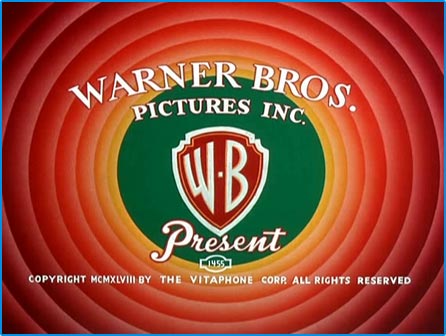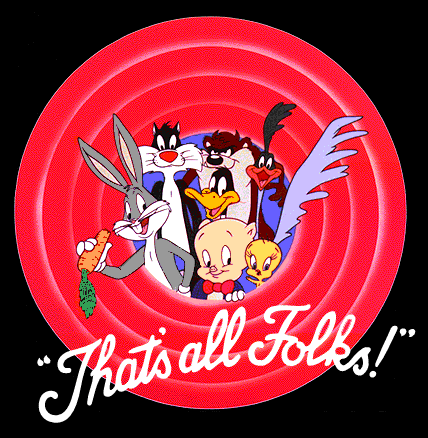By Iain MacMillan, RMM
Over on the RMM blog, we explained what Facebook Places was, how it worked and who might use it.
While that post looked at how Facebook’s users might use Places, we’ve also been thinking about what advantages the new feature offers brands – particularly over Foursquare.
Currently, Foursquare users get the benefit of social gaming through collecting badges, discounts from brands like Starbucks and a new kind of interaction with friends. Facebook currently offers only the last of these three options. It hasn’t stolen the mechanism of rewarding users through badges, nor has it benefited from a lucrative partnership like Starbucks offering Foursquare power users free coffee. But Facebook Places may have the sheer might needed to expose a brand to large, hitherto untapped networks of friends, colleagues and family.
Facebook has a ready-made user base
, Foursquare has 2.5 million users. Very impressive for a start-up but in hard numbers barely comparable to . With such a massive user base, it will be Facebook Places and not a single-serving start-up which pushes geo-location into the mainstream over the next few years. There is little incentive to add users to your Foursquare network when they can access your status updates publicly via Twitter. But Facebook is a closed network; Places provides a new way in for brands.
This means any brand reliant on a bricks-and-mortar location should be quick to claim their postcode on Facebook Places – the quicker the uptake, the more noticeable to users. More so than Foursquare, if a user checks into your Facebook Place it will display to a potentially massive network of prospective customers. Brands who have marked themselves on Places may find themselves as a meeting or talking point among large networks of friends who have tagged themselves and each other on check-in.
Places will affect your fan page
There’s an option for any brand with a Facebook fan page to ‘merge’ this with the new Places functionality. Doing so will update your page design to reflect a map of your location and – importantly – status updates of everyone who has checked in there, whether a fan of your page or not.
Unfortunately there’s a flaw –this doesn’t really work for any brand with multiple locations to map. The natural step from here would be to consider creating individual pages for individual stores; creating smaller but potentially more loyal communities around single locations and also driving footfall.
Facebook is brand-friendly
Out of all the mainstream social media platforms, Facebook is the most nakedly interested in making money out of its users – for better or worse. Its swift release of the Places advertiser guidelines, despite technical teething problems with the new feature, suggests Facebook is keen to broadcast Places as an opportunity for brands as much as users. It is very much in Facebook’s interest to ensure brands can exploit Places for commercial advantage more quickly, easily and cost-effectively than the rival Foursquare over the upcoming months – which is why, as a brand, it would be smart to keep an eye on it.
Yesterday saw our final session on the IAB’s rising voice in social media course. The installment was rounded up with presentations from Nick Stringer, director of regulatory affairs at the IAB and , senior marketing manager at Skive. Nick took the delegates through why it’s important to be ‘safe’ in social media, covering the all important ASA remit extension that comes into place in Spring 2011. Tom Ollerton, senior marketing manager at Skive spoke about his opinions on whats next for social media with some great examples.
See below to view both presentations in full…
By , senior PR and marketing manager, IAB
Whilst it’s important to blog about new technologies, platforms and Twitter’s ‘who to follow’ function, there are some issues within social media that are oldies but goodies, and remain deserving of our attention.
An associate kindly sent me this press release yesterday, and I must say I was jolly interested. Not because I want to buy the Club IAB page on Facebook tens of thousands of new recruits, but because I pondered for at least 3 minutes as to who else received it, and who out of those people was tempted to part with their cash. It might be a joke (particularly having read the blog) and if it is, a very funny joke it is too. The press release is below, but without the company details:
Facebook Popularity On Sale To The Highest Bidder - The ’social’ may soon be taken out of social media site Facebook as popularity on the site can now be sold to the highest bidder.
A certain ‘Social media marketing company’ has begun selling fans and friends on Facebook to businesses and organizations wanting to increase their exposure online and they’ve now announced they are selling up to 20 million fans at a time, meaning just about anyone with a “fat wallet” can be more popular than Lady Gaga, at least on Facebook. Read more…
By , Digital & Social Media Director, markettiers4dc Group
Earlier this week I checked into Sa Fàbrica de Gelats on Foursquare to let my friends know that I’ve just bought one of their speciality Orange ice creams whilst in Soller in Mallorca on holiday.
Now, why they would care to know that is another debate! The reason I did it, however, is because as part of my job, I’m still trying to understand the benefit this latest alleged Social Media star can have to my clients, and at the moment, I’m still struggling to find the answer. Read more…
, Head of Social Media at Microsoft Advertising, talks to the IAB about social media from an advertising and product perspective. Kicking off with a simple explanation of what social media is and why it’s so vital for CMOS, she uses her own case study from the Windows 7 launch as a great example of how you can use dialogue with consumers to inform business research and product development. Watch the interview in full below to also find out what future trends she feels will be hitting the social media industry next.
, Head of Digital Strategy at Imagination talks to the IAB about how social media has heightened the brand experience. Discussing the relationship between the consumer and the brand, she outlines the ways in which consumer expectations have been heightened thanks to digital, and the increased feedback that marketers are getting in social spaces. Using case study examples from Debenhams and London Museums, and argues that a successful case study is essential to persuade a brand to take that first step into ‘doing’ social media.
Watch the below video to see the full interview
By Daan Jansonius, Account Manager, SocialMedia8
Warner Bros’ recent influencer program faux pas has been widely publicised and critisised by many social media commentators. Recipient of the irrelevant and badly targeted outreach e-mail Adam Singer shared the incident with his readers on his Future Buzz blog, after which TechDirt and Repution Online among others chipped in their 2 cents too.

Warner Bros made matters worse with an ill thought out response, defending their efforts in a comment saying it was ‘fully WOMMA compliant’. Whilst this may be true, it’s no defense for a campaign to lack basic common sense. However, we prefer to help brands move ahead with positivity and helpfulness rather than scorn and damnation.
So let’s look at where Warner Bros went wrong and how they could avoid a similar PR nightmare next time.
1) The the outreach email
There are two issues here. Firstly, there is a lack of personalisation which is an immediate red flag for most bloggers. Warner Bros claims to have come across Singer’s blog recently which is why he was invited. This claim lacks authenticity when you fail to include the person’s name in the salutation.
Secondly, and more importantly, if they had actually read the blog they would have noticed that Singer’s posts mostly revolve around online marketing. Whilst there may have been posts about online marketing in relation to the entertainment industry, he is not known for sharing his love for the latest blockbusters.
It’s great that Warner Bros is looking to involve their biggest fans through a loyalty program – but you have to make sure you target the right people. These errors point in the direction of a shotgun approach where they fired as much hail at bloggers with a healthy level of influence without any thought about their relevance to the brand and materials.
2) Paying people for blog postings
Paid blog postings have been debated for a long time. Whilst I don’t necessarily disagree with paying for advertorials (if appropriately marked as such), there are two issues here.
Firstly, the fact they are offering bloggers remuniration in exchange for publicity means this is not a word of mouth marketing campaign or loyalty program. The fact they seem to have taken a broad strokes approach with approaching influential bloggers indicates they are more interested in getting attention, not building loyalty. And that’s fine, but it should not be ‘disguised’ as a word of mouth marketing activity.
Secondly, there is no mention of necessary disclosure of the commercial tie-up between the blogger and Warner Bros’ Word marketing team. In both the UK and the USA it is now illegal for bloggers to take payments for posting content without disclosing this financial relationship. To prevent these issues from happening Warner Bros should be completely transparant with their intention, without sending mixed messages. If you are looking to build a loyalty program you have to make sure you target the relevant audience and provide them with great content – paying for loyalty is not a long term strategy.
3) Responding to critisism
It’s great to see that Warner Bros is aware of the conversations surrounding their brand. This should be the first step for any brand to get active in social media. However, their response seemed to fuel the flames rather than turn the situation around. This can be tracked down to two main reasons; 1) many bloggers felt they were hiding behind the WOMMA compliancy rules when common sense should have prevailed and 2) they took a very combative approach, taking the blogger head on.
We have debated some of the issues with this campaign and I’m sure Warner Bros’ intent was genuine, but the blogger’s expressed some agrievances with being targeted for this campaign. And he was right to do so. Instead of digging their heels in WB could have appproached the blogger and discuss the issues he had with this campaign.
Furthermore, WOMMA guidelines are exactly that – guidelines. They provide brands with a walking stick, but this should not prevent brands from using a common sense approach to their social media campaigns and programs. They made a mistake and should have owned up to it, rather than point the finger of blame at someone else.
That’s all folks!

The IAB’s Rising Voice in social media penultimate session took place last week. The 4th session was led by Ciaran Norris, Mindshare, Tony Effik, Publicis Modem and Phil Guest, Habbo. The presenters took the delegates through the ins and outs of paid for social media with some great case studies from the likes as Walkers and Skittles. The final session and graduation has now been moved to 24th August at 4pm at the IAB.
See below to view Ciarán Norris, head of social media at Mindshare presentation
See below to view Phil Guest, Executive Vice President Global Ad Sales at Sulake presentation




